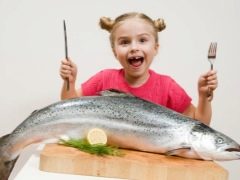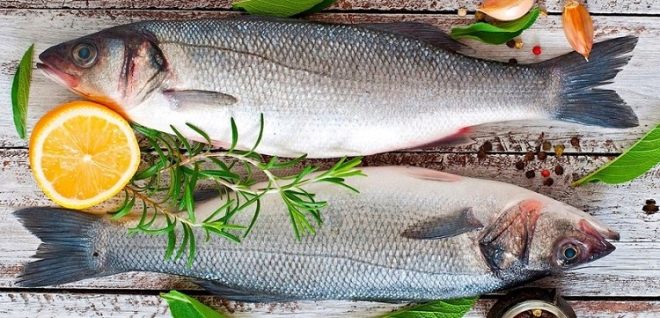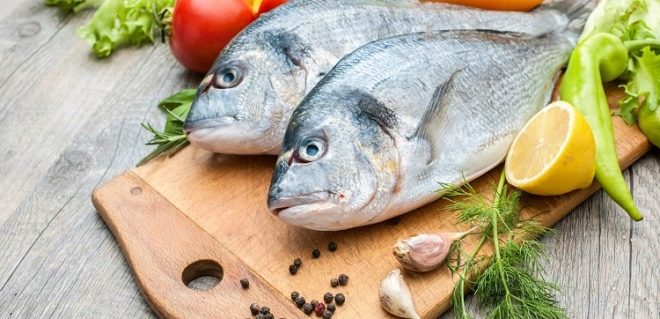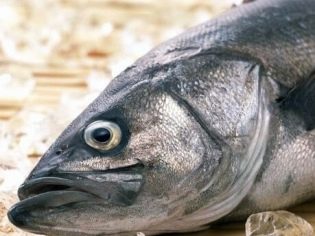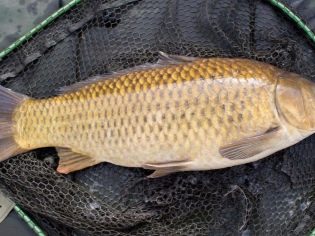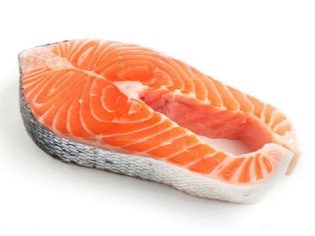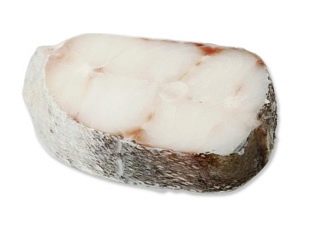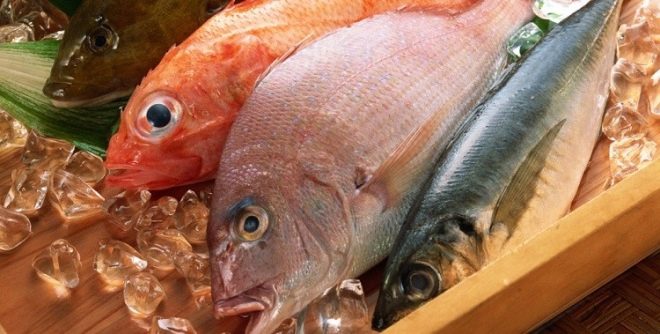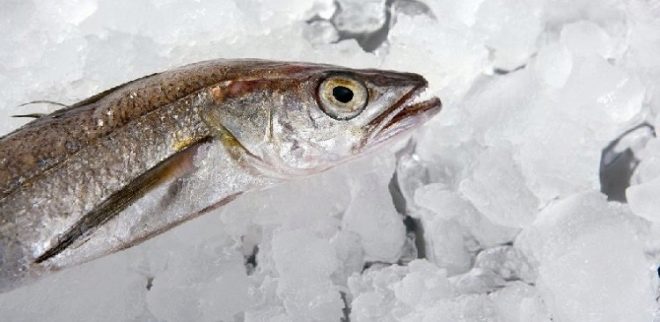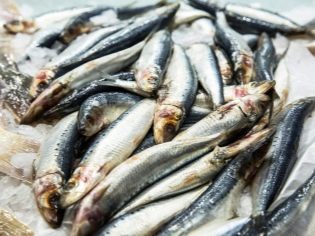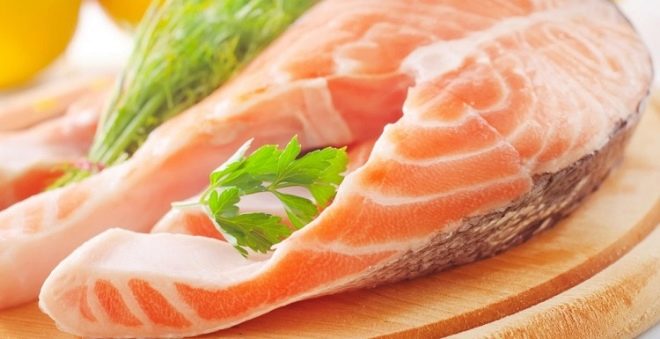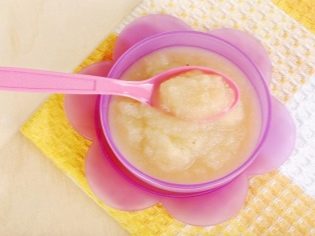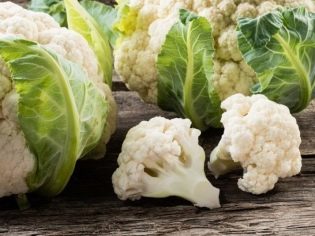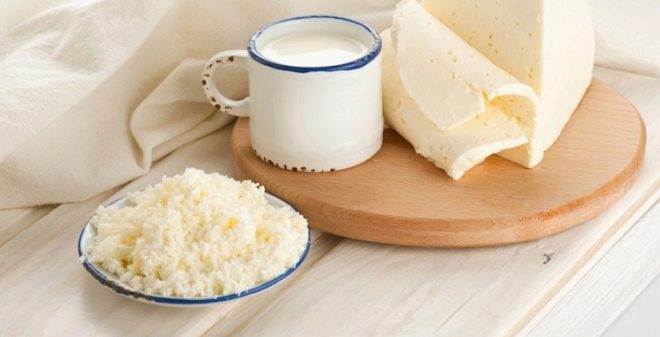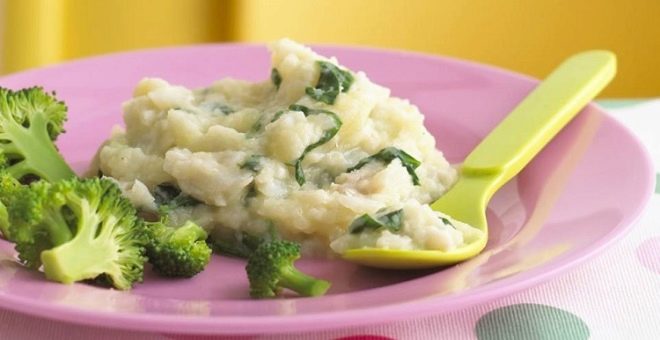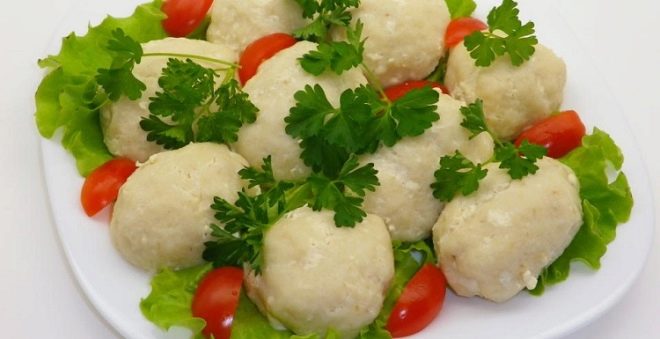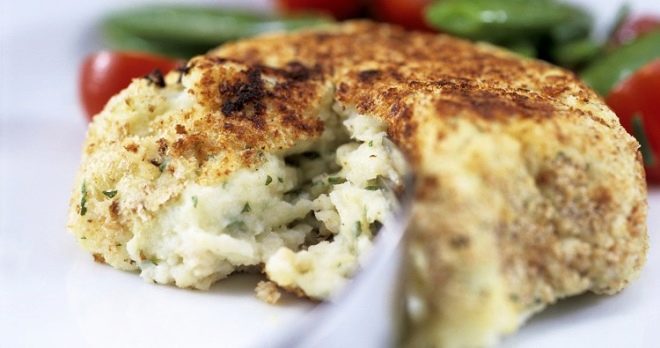What fish is good for children and how to cook it?
Once upon a time fish was a prohibited item in a child’s diet. It was believed that the fish, this still not able to speak baby, can make him remain silent for a long time. Today, signs have faded into the background, and a tasty and fragrant product is ready to enrich the children's body with useful substances.
What kind of fish is useful for children, and how to cook it, think all the mothers who care about the health of their offspring.
What kind of fish can be given to children?
Fish is a vitamin-rich product that baby food manufacturers recommend including in the diet from 8 months.
In fact, pediatricians advise not to rush into this product, leaving its development for 10–11 months of life, after fully adapting to vegetables, fruits, dairy products and meat.
The choice of fish for the children's menu is important to treat very responsibly, because some of its species are dangerous for the gentle stomach of the baby. In addition, individual and outwardly attractive individuals may contain parasites and pathogens.
According to the habitat of the fish are classified:
- on freshwater or river - living in rivers, lakes and ponds;
- sea - living and breeding in the seas;
- artificially grown.
Experts advise to opt for marine inhabitants, as they have few bones, and their terrain is more environmentally friendly, unlike river competitors.
To marine inhabitants include:
- cod;
- haddock;
- pollock;
- scad.
However, the river fish caught in clean waters, can take pride of place on the children's table. It is less allergenic and well absorbed by the body of the child, although it requires more careful treatment of the bones.
River fish, recommended for the diet of children:
- river trout;
- hake;
- carp;
- river perch.
Do not be afraid of the above species, especially if the store or the fisher informs about the place of fishing.
Beware experts advise artificially grown individuals, usually infested with antibiotics, hormones and other growth enhancers. Their habitat leaves much to be desired, and almost all the nutrients are eclipsed by chemical constituents.
Having started looking for the perfect fish for the baby in the first 2 years of life, you should pay attention to its color.
Fish can be:
- red;
- white
Its color depends on the taste preferences of fish throughout life. So, eating red crustaceans, the individual receives a special pigment that affects its color. Note that red fish are more valued in the market, however, for the child the best option would be the white, less allergenic option.
However, if allergies are not observed, red river trout can be a good alternative to the diet.
This classification of multi-faceted and multi-species fish does not end there.
They are subdivided:
- fatty;
- moderately fat;
- non-greasy.
In the first year of life and up to 5 years, pediatricians recommend exclusively low-fat varieties for baby food, such as hake, pollock, perch, and navaga.
They are slightly inferior in taste to fatty and moderately fatty competitors, however, they are easier to digest and do not cause problems with the baby’s weak intestines.
Fish names such as catfish, carp and grouper are medium-fat varieties. They delight fish lovers with a delicate taste and a whole range of vitamins. Having decided to give their child, you should not increase the amount of fat by frying. Steamed carp or catfish meat can be an optionable to diversify the kid's fish menu. Fatty varieties can contain up to 33% fat, and therefore experts do not recommend them for frequent use, even for adults.
Preferring one type of product or another, you should pay attention to size.
Researchers agree that small fish contain more nutrients and less toxic than their large counterparts. Of course, cooking small fish longer, however, the health of the child is more important.
The ideal fish for a child has the following features:
- white;
- sea or river, caught in clean waters;
- non-greasy;
- small size.
Hake, perch, navaga, pike perch, flounder, haddock, pollock can be considered fish for the first feeding. As you can see, the list for selection is quite wide.
What should be abandoned?
The first and important criterion for the rejection of a fish is its high fat content. Despite the rich taste, softness and the presence of a high concentration of omega-3 fatty acids, it is not recommended to eat it for children up to three years old.
Fatty fish include:
- sardine;
- herring;
- salmon;
- tuna;
- shark;
- Atlantic sturgeon.
After three years, this fish is able to benefit the body, however, it is recommended to use it no more than once a week boiled or baked in its own juice.
Another criterion forbidden for kids is artificial habitat. In addition to the fact that artificial reservoirs are considered one of the most polluted habitats, their nutrition and hormones negatively affect not only children, but also adults.
List of prohibited products for kids of all ages.
- Salmon and trout - fed by feed with a special dye canthaxanthin, making the fish product bright red color. Regular consumption of products with such additives causes visual impairment.
- Sole or pangasius - bred in Southeast Asia in the Mekong River, considered the most polluted in the world.
- Tilapia - massively processed by male hormones, as well as an omnivorous species, carrying a lot of intestinal infections and pathogens.
It should be noted that the food for fish grown artificially does not have strict requirements, and therefore unscrupulous sellers actively use low-quality food, flavored with antibiotics and other chemical compounds. Regularly using such varieties and offering them to children can significantly suppress the natural immunity.
The benefits and harms of different types
As mentioned earlier, saltwater white fish, belonging to low-fat species, is suitable for most children. Nevertheless, each variety has its own contraindications and features, which every parent should be aware of.
The benefits of white fish:
- easily digestible protein;
- the presence of all the B vitamins, such as riboflavin, thiamine, folic acid, etc .;
- the presence in the composition of vitamin C;
- the presence of phosphorus and calcium;
- A huge amount of vitamin B12, which is responsible for preventing anemia.
Of course, such a product with regular use helps to establish metabolic processes, improve immunity, balance the nervous system and help the child find healthy teeth and bones.
Despite all the advantages of white fish, some parents are convinced of the greatest benefits from eating red fish.
Differences from white rival:
- increased amount of protein;
- high fat content;
- increased amount of polyunsaturated acids;
- lack of vitamin B12;
- rich delicate flavor.
Thus, for a child, the only positive thing about red fish is its tenderness and juiciness.
The diet of the child must be balanced, and therefore daily feeding even the most useful product can cause negative consequences for the body.
Entering into the menu red fish can easily undermine the normal processes of the pancreas, as well as provoke allergies, constipation and diarrhea.
Randomly using white species daily can also have a negative effect on the pancreas due to its high phosphorus content. In addition, wanting to flavor the unsaturated taste of a white fish with salt, parents impose a load on the kidneys of the child that is excessive for its age.
How to teach the product?
Best of all, babies up to the year get used to juices and fruit purees, while parents have to be nervous with fish and meat. Of course, the matter here is in the sweet taste of fruit, vaguely reminding the baby about the taste of breast milk or the mixture. Nevertheless, it is necessary to teach fish.
Starting from 8–9 months, schooling begins with mashed potatoes. Crushed and unsalted fish is served to the child in the amount of ½ teaspoon. As a rule, such small volumes are perceived quite well. Full portions of mashed potatoes may or may not be to your liking. In this case, pediatricians recommend experimenting with approved species of fish, but in no case be forced to have a child. One way or another, children are different, which means that there are also those whose negative attitude towards fish manifests itself from infancy.
Mixing fish puree with vegetable is an ideal way out of the current situation.
So, the fish goes well:
- with potatoes;
- with zucchini;
- with cauliflower.
Sweet vegetables like beets, carrots, pumpkin should be avoided.
Mixing should occur gradually. For example, for the first time, 1–2 teaspoons of fish is enough for 100 grams of vegetable puree. If this mixture has attracted the child, the following times the ratio of fish puree to vegetable can be slightly increased.
After two years, the baby is already difficult to attract mashed potatoes, and therefore the type of fish must be modified. In the event that a boiled or steamed fish is not liked, parents go for small tricks.
Ways to change the taste of fish:
- bake or extinguish the fish in sour cream;
- bake fish, sprinkled over grated cheese;
- Cook the batter and, dipping small fillet pieces into it, fry until golden brown;
- boil the pieces in chicken broth;
- cook soufflé with the addition of eggs and other vegetables.
Experimentation and some trick for the good will help to love the delicate fishy taste of the little fussy.
What can be replaced in the diet?
Sometimes the use of fish products has to be abandoned. This may be due to allergies and individual intolerance to the product. Fortunately, over time, signs of allergy may disappear, however, during the period of refusal from fish, it is important to replace it with products similar in vitamin content.
So, for a child easily digestible protein can serve:
- lean meat;
- dairy products.
By consuming chicken, turkey and lean beef, you can greatly replenish the required amount of protein in the body. Note that, unlike fish in the body, it is absorbed by only 85%, while fish products - by 94–98%.
The children's body can get protein from fermented milk and dairy products. Pediatricians at the same time advised to use adapted children's products, having in their composition a reduced fat balance. "Adult" food can be poorly absorbed by the child, causing various problems with the gastrointestinal tract.
Once the baby is one year old, fish oil can be added to its diet. Proper dosage and strict adherence to pediatrician recommendations will enrich the growing body with healthy fats.
Cooking details and recipes
The taste of fish and the future love for her baby directly depends on the efforts of parents. Fresh and properly cooked fish will certainly enjoy your beloved child.
Product freshness criteria:
- red gills of rich color;
- eyes without turbidity;
- the color of the meat is light.
Pediatricians are advised to choose fresh fish for cooking, however, a high-quality fresh frozen product can be a worthy alternative. It should be noted that defrosting fish in the microwave does not need to bring it to full thawing, leaving time for natural defrosting in salted water.
The first fish dish - mashed potatoes. The product for it should be boiled for 20 minutes in a small amount of unsalted water or steamed. Experienced housewives are advised to cook the fish in whole or in large pieces to preserve its richness and rich taste. Fish should be dipped in boiling water, thereby preventing its boiling down and loss of taste. The finished product is cleaned of the remaining seeds and ground with a blender or meat grinder with the addition of a small amount of water.
Subsequent acquaintance with fish by children from the year occurs with the help of soufflé, quenelles and chops. To cook a tender soufflé, the fish is boiled by the method described above and turned into a homogeneous mass. Subsequently, an egg is driven into it, after which it is placed in a water bath.
Fish dishes abound with various kinds of stuffing variations. So, simple and original recipe fish dumplings.
To prepare it you need:
- cook minced fish;
- add a piece of ground white bread, soaked in milk and soaked in milk;
- beat the chicken protein until fluffy foam;
- gently stir it into the mass;
- form small balls;
- place the billet in boiling water for 10–15 minutes.
They serve tender snow-white dill with a piece of butter in a warm form.
Popular in the fish menu and chops, the necessary ingredients for which are:
- cod minced fish;
- roasted carrots and onions;
- egg;
- sour cream;
- wheat bread;
- flour for breading.
Cooking chop begin with the connection of minced fish with carrots and onions. To do this, they scroll through a meat grinder, not forgetting to add bread. The mixture is diluted with water until lightness appears and mixed with the egg. Having formed balls from the mixture, they are rolled over with flour and placed on a baking sheet in the oven for 10 minutes, then poured sour cream and cook for another half hour.
To learn how to cook fish for a child, see the next video.
